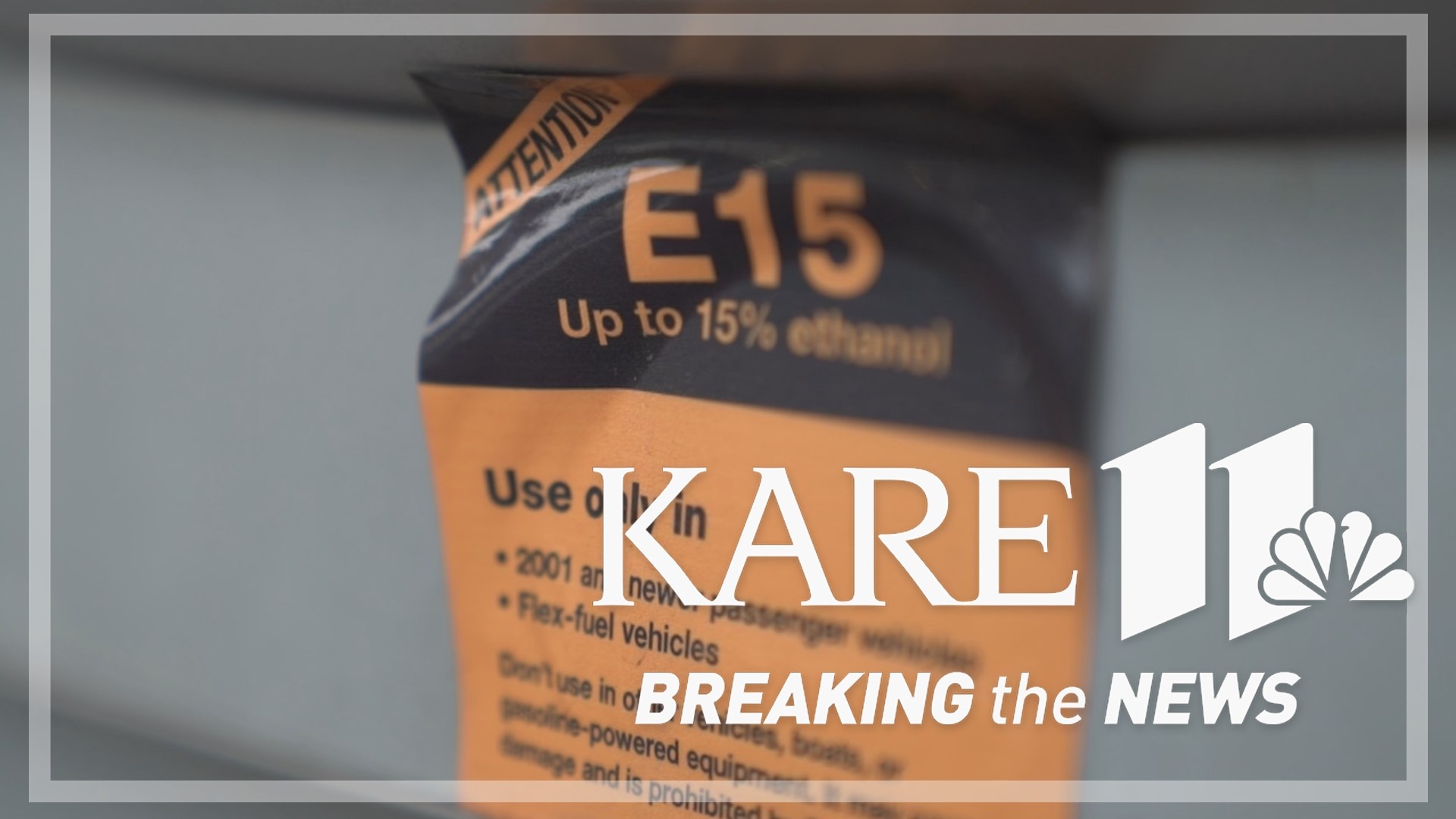MINNEAPOLIS — Making E15 available all year long would simultaneously boost demand for Minnesota ethanol and give consumers a break on prices at the pump.
That's why Senator Amy Klobuchar and US Rep. Angie Craig are the lead authors of legislation legalizing year-round E15.
The E15 blend, which contains up to 15 percent ethanol, is sold as 88 octane at the gas pumps. It's currently less expensive than regular unleaded because ethanol is less expensive to produce than gasoline at current world oil prices.
"It’s a good step. We look at it as a step. At the Farmers Union we want to continue to push for higher blends than that," Gary Wertish, president of the Minnesota Farmers Union, told KARE.
"There’s a lot of talk now about moving to electric vehicles. Technology will get us there eventually, but we’re going to be burning fossil fuels for a long time yet, and that’s renewable energy, higher blends of ethanol can play a huge role in that."
The Klobuchar-Craig E15 legislation has won the support of 250 farm national and state organizations that work in the agriculture and energy arenas.
The EPA has historically banned E15 from June 1 to Sept. 15, but President Biden issued an emergency order last June to temporarily lift the summertime ban.
Then-President Trump used rule-making to lift the summertime ban in 2019 and 2020, but a federal court ruled in 2021 that the Trump Administration's rule only applied to E10, which is a 10 percent ethanol blend.
The EPA's summertime ban on E15 was sparked by ozone pollution concerns because ethanol evaporates faster than gasoline while being pumped in warm temperatures. The tradeoff is that E15 is a cleaner burning fuel and is made from renewable resources produced in this country.
State legislators in the 1990s mandated that all gasoline sold in Minnesota contain at least 10 percent ethanol. So, when you pump 87 octane in this state, you're getting a fuel that is 10 percent corn-based alcohol.
At a time of growing consolidation in the food production industry, dominated by huge national and international companies, ethanol is still mostly produced in plants owned by farming cooperatives.
"The 19 plants here, they’re all farmer-owned, and that’s huge, because it’s local people in that community owning that plant, providing jobs," Wertish explained.
"Any profits off the plant go back in the local community. We look at Exxon Mobile Oil, we have gas stations staffed by local people, but the production of that and the money off of that is not here, not staying in the community."
Minnesota drivers had already pumped 86 million gallons of E15 by the end of October, putting the state on a pace to set a new record for that fuel.
Watch more Breaking The News:
Watch all of the latest stories from Breaking The News in our YouTube playlist:

